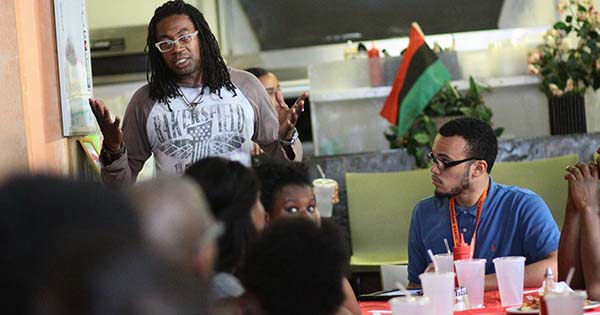
When we flip on a power switch in our homes, where does the electricity come from? How is it generated? There’s a good chance it’s from a coal-fired power plant. Click here for an easy way to trace your power source with nothing more than your zip code. With all the talk of developing new, sustainable energy sources, we’re still relying heavily on the old standbys like oil and coal.
Last November on The Marc Steiner Show, we had a coal industry spokesperson and a group of West Virginia residents as guests on the show to discuss coal mining. The conversation centered around mountaintop removal, one of the most widespread and quickly growing methods of mining coal in use today.
We were all blown away by what we learned in the process of putting that show together, and since then we’ve been wondering why this issue hasn’t been getting the attention it deserves. So, we decided that it’s something we should keep an ongoing focus on. Look for us to have continuing coverage both on this website and on the air.
Rather than covering the issue from afar, we decided to go straight to the source. This morning, I set out for the coal fields of southern West Virginia, along with photojournalist Antrim Caskey, who’s been working for the past 3 years to get people to pay attention to and do something about the environmental, including human, destruction caused by modern day coal mining practices in Appalachia. We’ll be spending this week down here lining up as many people as possible to contribute first-hand coverage to CEM on an ongoing basis. We’ll also be coming back with tons of new audio, photos, and video.
We’re spending the night in the Coal River Valley with Debbie Jarrel and Ed Wiley. You’ll hear a lot more about and from them if you stay with us here, for now check out one of the major projects they’ve been involved with, advocating for the safety and health of the students, teachers, and staff of Marsh Fork Elementary School. This site is full of info on that; briefly, it’s a school down the road from them sitting right down the hill from a huge, leaky sludge impoundment, or what Ed describes as a 2.8 billion gallon toxic waste dump.
The picture at the top is from this afternoon, during a beautiful hike Ed took us on in the woods behind his home. The pictures below are from this evening. They’re taken from the road, as we drove past an area being cleared by a coal company to put in a new beltline to transfer coal from the mining site to the processing plant.






Democracy in Crises: The Fire and The Fury
LISTEN NOW